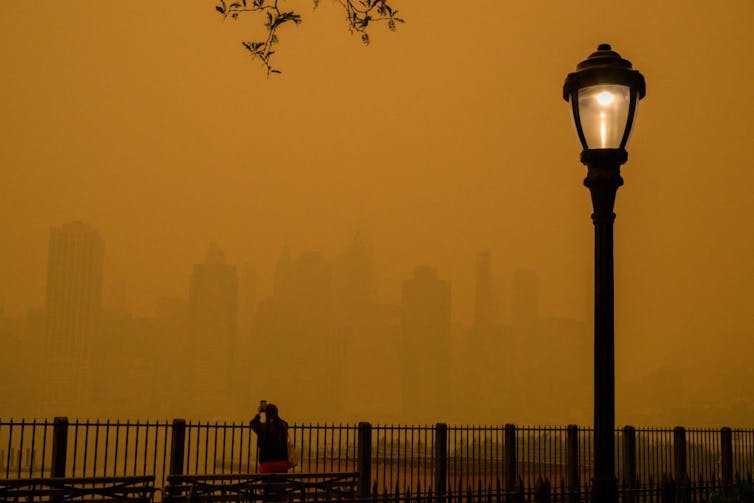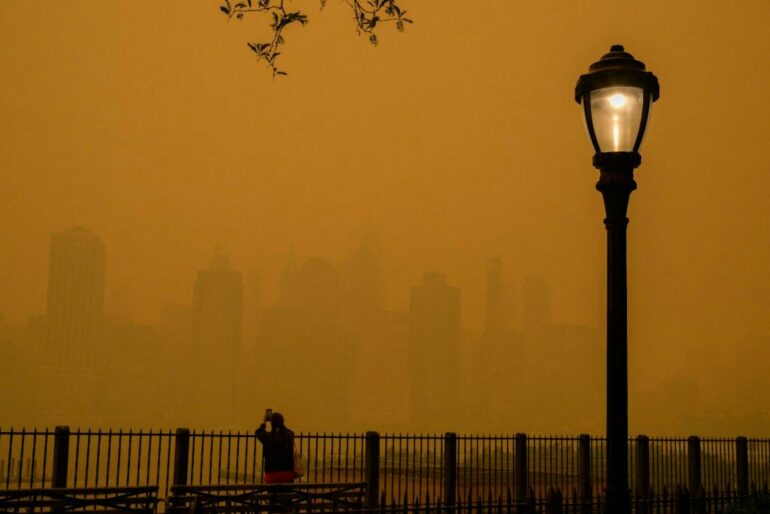Kids born in 2020 worldwide will experience twice the number of wildfires during their lifetimes compared with those born in 1960. In California and other western states, frequent wildfires have become as much a part of summer and fall as popsicles and Halloween candy.
Wildfires produce fine particulate matter, or PM₂.₅, that chokes the air and penetrates deep into lungs. Researchers know that short-term exposure to wildfire PM₂.₅ increases acute care visits for cardiorespiratory problems such as asthma. However, the long-term effects of repeated exposure to wildfire PM₂.₅ on chronic health conditions are unclear.
One reason is that scientists have not decided how best to measure this type of intermittent yet ongoing exposure. Environmental epidemiologists and health scientists like us usually summarize long-term exposure to total PM₂.₅ – which comes from power plants, industry and transportation – as average exposure over a year. This might not make sense when measuring exposure to wildfire. Unlike traffic-related air pollution, for example, levels of wildfire PM₂.₅ vary a lot throughout the year.
To improve health and equity research, our team has developed five metrics that better capture long-term exposure to wildfire PM₂.₅.
Measuring fluctuating wildfire PM₂.₅
To understand why current measurements of wildfire PM₂.₅ aren’t adequately capturing an individual’s long-term exposure, we need to delve into the concept of averages.
Say the mean level of PM₂.₅ over a year was 1 microgram per cubic meter. A person could experience that exposure as 1 microgram per cubic meter every day for 365 days, or as 365 micrograms per cubic meter on a single day.
While these two scenarios result in the same average exposure over a year, they might have very different biological effects. The body might be able to fend off damage from exposure to 1 microgram per cubic meter each day, but be overwhelmed by a huge, single dose of 365 micrograms per cubic meter.
For perspective, in 2022, Americans experienced an average total PM₂.₅ exposure of 7.8 micrograms per cubic meter. Researchers estimated that in the 35 states that experience wildfires, these wildfires added on average just 0.69 micrograms per cubic meter to total PM₂.₅ each year from 2016 to 2020. This perspective misses the mark, however.
For example, a census tract close to the 2018 Camp Fire experienced an average wildfire PM₂.₅ concentration of 1.2 micrograms per cubic meter between 2006 to 2020. But the actual fire event had a peak exposure of 310 micrograms per cubic meter – the world’s highest level that day.

Classic estimates of average PM₂.₅ levels miss the peak exposure of wildfire events.
Angela Weiss/AFP via Getty Images
Scientists want to better understand what such extreme exposures mean for long-term human health. Prior studies on long-term wildfire PM₂.₅ exposure…



